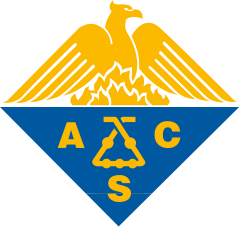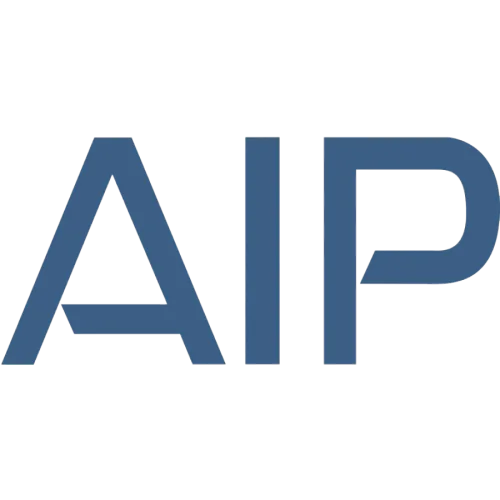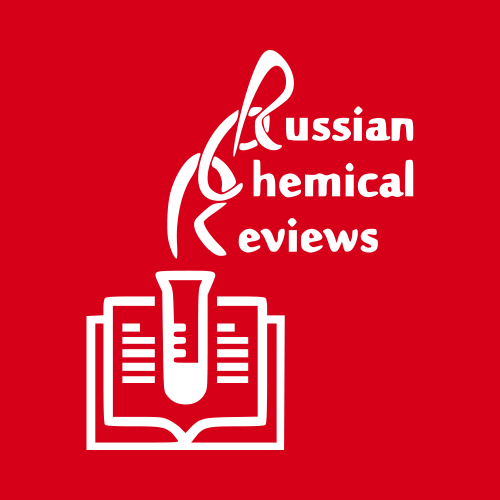Core–Shell Covalently Linked Graphitic Carbon Nitride–Melamine–Resorcinol–Formaldehyde Microsphere Polymers for Efficient Photocatalytic CO2 Reduction to Methanol
Jie Ding
1, 2
,
Qingli Tang
3
,
Yanghe Fu
4
,
Yulong Zhang
5
,
Juanmin Hu
1
,
Tong Li
1
,
Zhong Qin
1
,
Maohong Fan
2, 6, 7
,
Publication type: Journal Article
Publication date: 2022-05-27
scimago Q1
wos Q1
SJR: 5.554
CiteScore: 22.5
Impact factor: 15.6
ISSN: 00027863, 15205126
PubMed ID:
35623060
General Chemistry
Catalysis
Biochemistry
Colloid and Surface Chemistry
Abstract
Photocatalytic reduction of CO2 with light and H2O to form CH3OH is a promising route to mitigate carbon emissions and climate changes. Although semiconducting metal oxides are potential photocatalysts for this reaction, low photon efficiency and leaching of environmentally unfriendly toxic metals limit their applicability. Here, we report metal-free, core-shell photocatalysts consisting of graphitic carbon nitride (g-C3N4, CN) covalently linked to melamine-resorcinol-formaldehyde (MRF) microsphere polymers for this reaction. Covalent linkage enabled efficient separation of photo-generated carriers and photocatalysis. Using 100 mg of a photocatalyst containing 15 wt % CN, a CH3OH yield of 0.99 μmol·h-1 was achieved at a reaction temperature of 80 °C and 0.5 MPa with external quantum efficiencies ranging from 5.5% at 380 nm to 1.7% at 550 nm. The yield was about 20 and 10 times higher than that of its components CN and MRF, respectively. Characterization with X-ray photoelectron spectroscopy, transmission electron microscopy, and bulk and surface elemental analyses supported the formation of a core-shell structure and the charge transfer in the C-N bond at the CN-MRF interface between the methoxy group in the 2,4-dihydroxylmethyl-1,3-diphenol part of MRF and the terminal amino groups in CN. This enhanced ligand-to-ligand charge transfer resulted in 67% of the photo-excited internal charge transferred from CN to the hydroxymethylamino group in MRF, whose amino group was the catalytic site for the CO2 photocatalytic reduction to CH3OH. This study provides a series of new metal-free photocatalyst designs and insights into the molecular-level structure-mediated photocatalytic response.
Found
Nothing found, try to update filter.
Found
Nothing found, try to update filter.
Top-30
Journals
|
2
4
6
8
10
12
14
|
|
|
Chemical Engineering Journal
14 publications, 10.85%
|
|
|
Journal of Colloid and Interface Science
7 publications, 5.43%
|
|
|
Journal of Materials Chemistry A
7 publications, 5.43%
|
|
|
Angewandte Chemie - International Edition
6 publications, 4.65%
|
|
|
Angewandte Chemie
6 publications, 4.65%
|
|
|
Applied Catalysis B: Environmental
5 publications, 3.88%
|
|
|
Advanced Functional Materials
5 publications, 3.88%
|
|
|
ACS Catalysis
4 publications, 3.1%
|
|
|
Industrial & Engineering Chemistry Research
4 publications, 3.1%
|
|
|
Carbon
3 publications, 2.33%
|
|
|
Catalysts
3 publications, 2.33%
|
|
|
Chemical Communications
3 publications, 2.33%
|
|
|
Inorganic Chemistry
2 publications, 1.55%
|
|
|
Journal of Environmental Chemical Engineering
2 publications, 1.55%
|
|
|
ACS Nano
2 publications, 1.55%
|
|
|
Journal of Alloys and Compounds
2 publications, 1.55%
|
|
|
ACS applied materials & interfaces
2 publications, 1.55%
|
|
|
Nano Energy
2 publications, 1.55%
|
|
|
Inorganic Chemistry Frontiers
2 publications, 1.55%
|
|
|
Advanced Materials
2 publications, 1.55%
|
|
|
Energy and Environmental Science
2 publications, 1.55%
|
|
|
ChemElectroChem
1 publication, 0.78%
|
|
|
Materials Reports Energy
1 publication, 0.78%
|
|
|
Sustainable Energy and Fuels
1 publication, 0.78%
|
|
|
Green Chemistry
1 publication, 0.78%
|
|
|
Journal of Chemical Physics
1 publication, 0.78%
|
|
|
Journal of Materials Science and Technology
1 publication, 0.78%
|
|
|
Fuel Processing Technology
1 publication, 0.78%
|
|
|
New Journal of Chemistry
1 publication, 0.78%
|
|
|
2
4
6
8
10
12
14
|
Publishers
|
10
20
30
40
50
60
|
|
|
Elsevier
55 publications, 42.64%
|
|
|
Wiley
26 publications, 20.16%
|
|
|
Royal Society of Chemistry (RSC)
23 publications, 17.83%
|
|
|
American Chemical Society (ACS)
15 publications, 11.63%
|
|
|
MDPI
4 publications, 3.1%
|
|
|
Springer Nature
2 publications, 1.55%
|
|
|
AIP Publishing
1 publication, 0.78%
|
|
|
Autonomous Non-profit Organization Editorial Board of the journal Uspekhi Khimii
1 publication, 0.78%
|
|
|
Proceedings of the National Academy of Sciences (PNAS)
1 publication, 0.78%
|
|
|
IOP Publishing
1 publication, 0.78%
|
|
|
10
20
30
40
50
60
|
- We do not take into account publications without a DOI.
- Statistics recalculated weekly.
Are you a researcher?
Create a profile to get free access to personal recommendations for colleagues and new articles.
Metrics
129
Total citations:
129
Citations from 2024:
91
(70.55%)
Cite this
GOST |
RIS |
BibTex |
MLA
Cite this
GOST
Copy
Ding J. et al. Core–Shell Covalently Linked Graphitic Carbon Nitride–Melamine–Resorcinol–Formaldehyde Microsphere Polymers for Efficient Photocatalytic CO2 Reduction to Methanol // Journal of the American Chemical Society. 2022. Vol. 144. No. 22. pp. 9576-9585.
GOST all authors (up to 50)
Copy
Ding J., Tang Q., Fu Y., Zhang Y., Hu J., Li T., Qin Z., Fan M., Kung H. Core–Shell Covalently Linked Graphitic Carbon Nitride–Melamine–Resorcinol–Formaldehyde Microsphere Polymers for Efficient Photocatalytic CO2 Reduction to Methanol // Journal of the American Chemical Society. 2022. Vol. 144. No. 22. pp. 9576-9585.
Cite this
RIS
Copy
TY - JOUR
DO - 10.1021/jacs.1c13301
UR - https://doi.org/10.1021/jacs.1c13301
TI - Core–Shell Covalently Linked Graphitic Carbon Nitride–Melamine–Resorcinol–Formaldehyde Microsphere Polymers for Efficient Photocatalytic CO2 Reduction to Methanol
T2 - Journal of the American Chemical Society
AU - Ding, Jie
AU - Tang, Qingli
AU - Fu, Yanghe
AU - Zhang, Yulong
AU - Hu, Juanmin
AU - Li, Tong
AU - Qin, Zhong
AU - Fan, Maohong
AU - Kung, Harold
PY - 2022
DA - 2022/05/27
PB - American Chemical Society (ACS)
SP - 9576-9585
IS - 22
VL - 144
PMID - 35623060
SN - 0002-7863
SN - 1520-5126
ER -
Cite this
BibTex (up to 50 authors)
Copy
@article{2022_Ding,
author = {Jie Ding and Qingli Tang and Yanghe Fu and Yulong Zhang and Juanmin Hu and Tong Li and Zhong Qin and Maohong Fan and Harold Kung},
title = {Core–Shell Covalently Linked Graphitic Carbon Nitride–Melamine–Resorcinol–Formaldehyde Microsphere Polymers for Efficient Photocatalytic CO2 Reduction to Methanol},
journal = {Journal of the American Chemical Society},
year = {2022},
volume = {144},
publisher = {American Chemical Society (ACS)},
month = {may},
url = {https://doi.org/10.1021/jacs.1c13301},
number = {22},
pages = {9576--9585},
doi = {10.1021/jacs.1c13301}
}
Cite this
MLA
Copy
Ding, Jie, et al. “Core–Shell Covalently Linked Graphitic Carbon Nitride–Melamine–Resorcinol–Formaldehyde Microsphere Polymers for Efficient Photocatalytic CO2 Reduction to Methanol.” Journal of the American Chemical Society, vol. 144, no. 22, May. 2022, pp. 9576-9585. https://doi.org/10.1021/jacs.1c13301.











